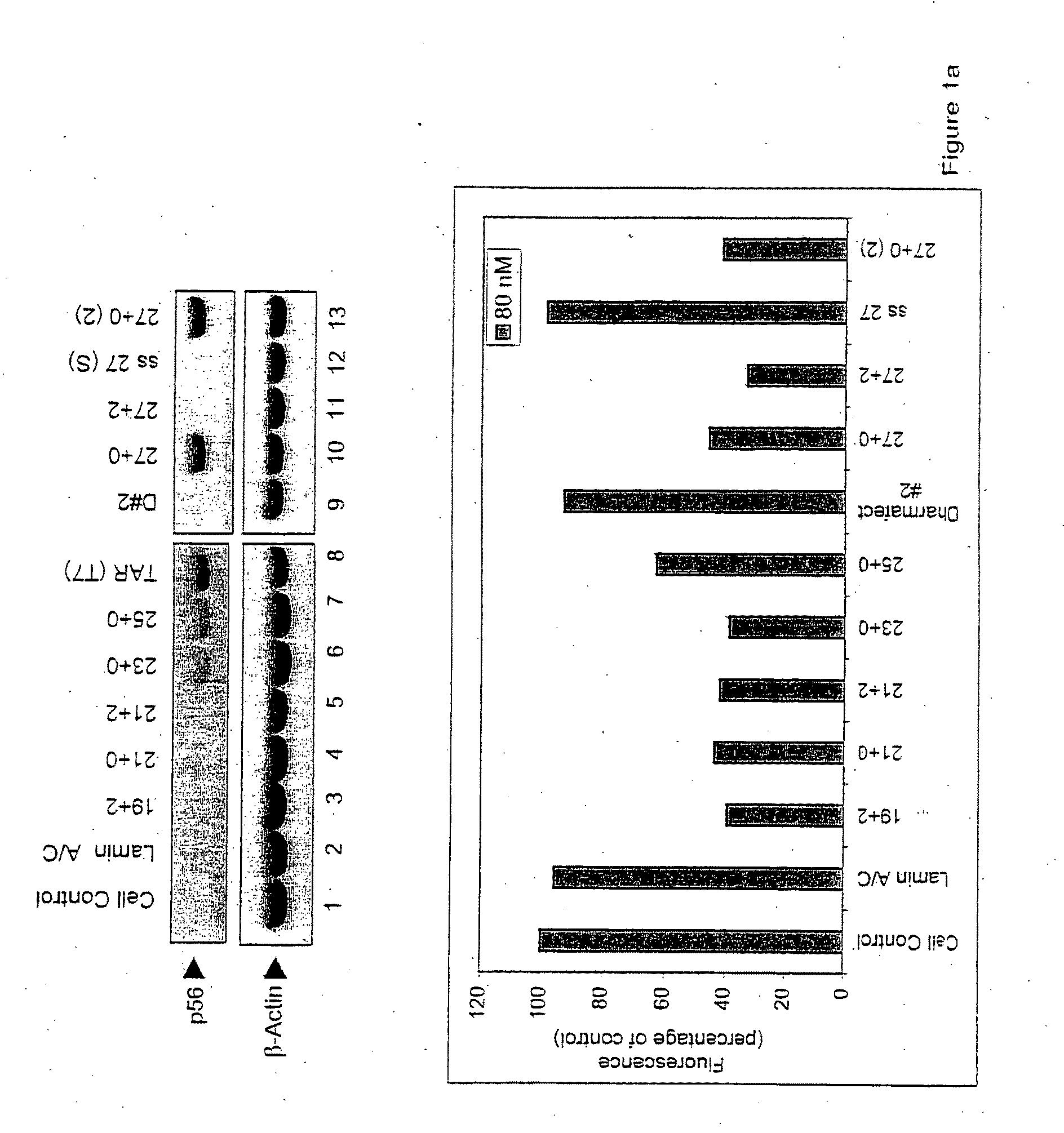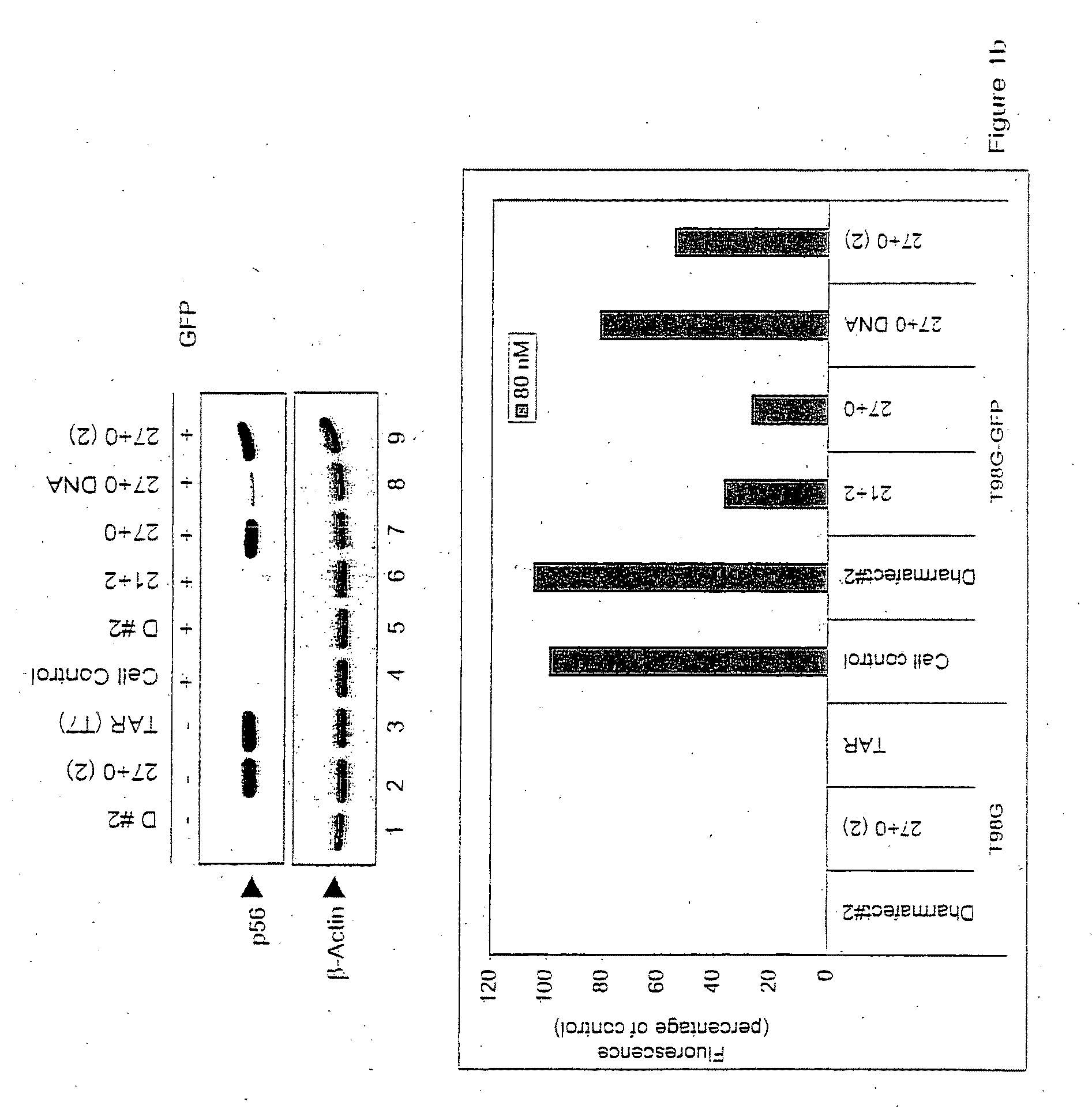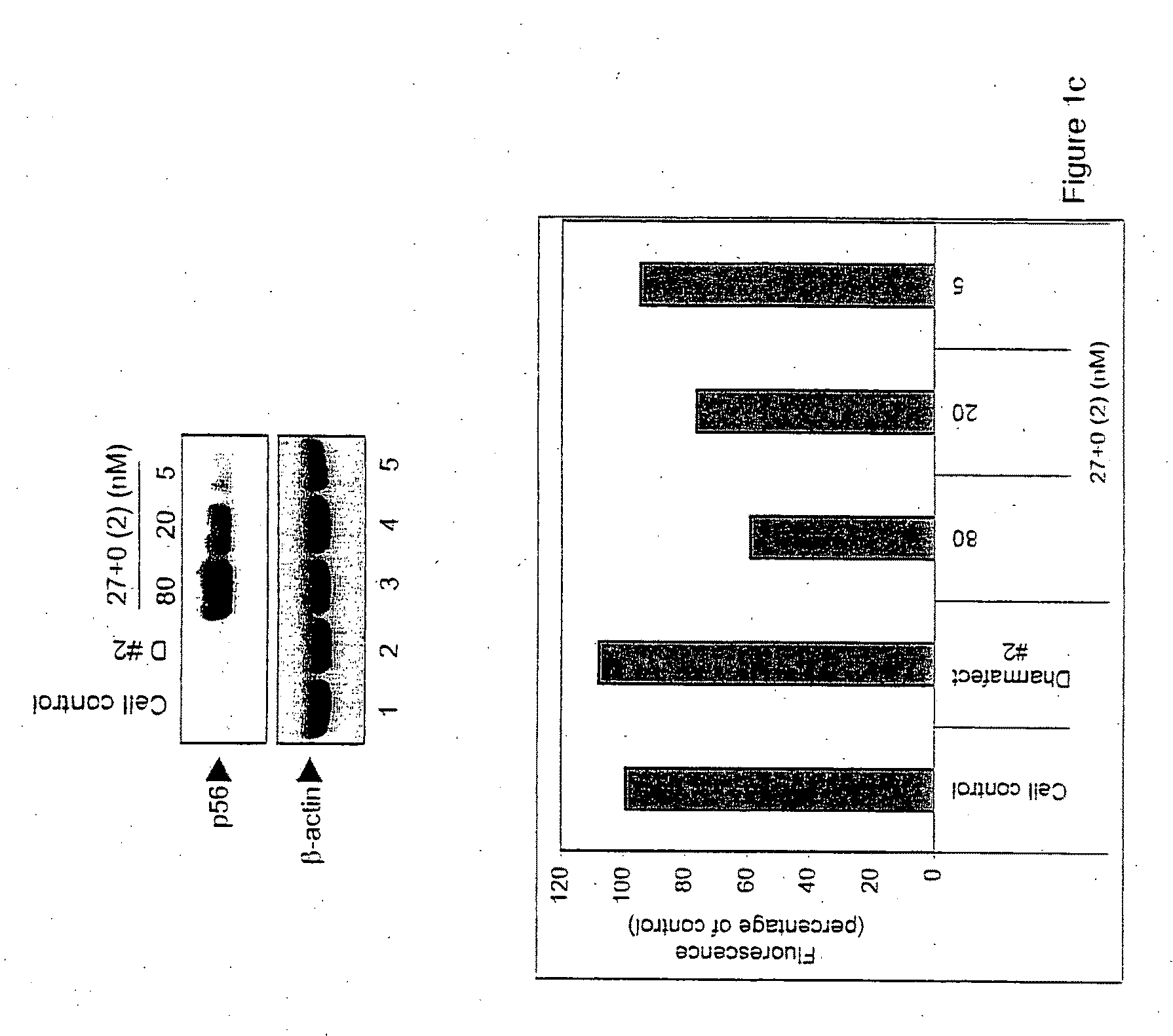Small interfering RNAS as non-specific drugs
a technology of rnas and small molecules, applied in the direction of biochemistry apparatus and processes, drug compositions, activity regulation, etc., can solve the problems of sirnas, complicating the use of rna interference (rnai) to specifically down-regulate gene expression, etc., to improve the efficacy of sirna-based treatments, complicating the use of rna interference (rnai), and modulating the activation of antivir
- Summary
- Abstract
- Description
- Claims
- Application Information
AI Technical Summary
Benefits of technology
Problems solved by technology
Method used
Image
Examples
Embodiment Construction
[0024]As described herein, the response of mammalian cells to chemically synthesized siRNAs of different sizes containing different types of overhangs and end modifications was analyzed. While all of the siRNAs tested silenced the target gene (GFP), not all of them activated dsRNA-signaling pathways. While size of the siRNA molecule was a factor in inducing non-specific activation of dsRNA signaling, more importantly, it was found that the presence of the 2 nucleotide (2-nt) 3′ overhangs characteristic of Dicer products precluded activation of these pathways. These results demonstrate the structural basis for discrimination between products of the Dicer-mediated siRNA and miRNA pathways and products of viral infection.
[0025]In particular, the present invention is directed to a method of modulating activation of a double stranded RNA (dsRNA) signaling pathway, such as dsRNA that accompanies RNA interference (RNAi) of a (one or more) target RNA sequence, in a (one or more) cell or an ...
PUM
| Property | Measurement | Unit |
|---|---|---|
| temperature | aaaaa | aaaaa |
| volume | aaaaa | aaaaa |
| temperature | aaaaa | aaaaa |
Abstract
Description
Claims
Application Information
 Login to View More
Login to View More - R&D
- Intellectual Property
- Life Sciences
- Materials
- Tech Scout
- Unparalleled Data Quality
- Higher Quality Content
- 60% Fewer Hallucinations
Browse by: Latest US Patents, China's latest patents, Technical Efficacy Thesaurus, Application Domain, Technology Topic, Popular Technical Reports.
© 2025 PatSnap. All rights reserved.Legal|Privacy policy|Modern Slavery Act Transparency Statement|Sitemap|About US| Contact US: help@patsnap.com



